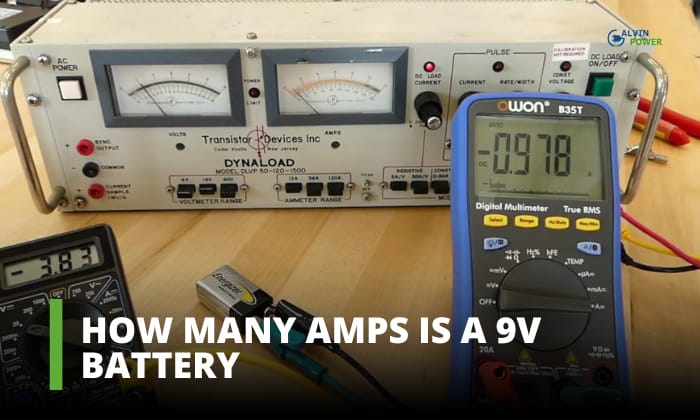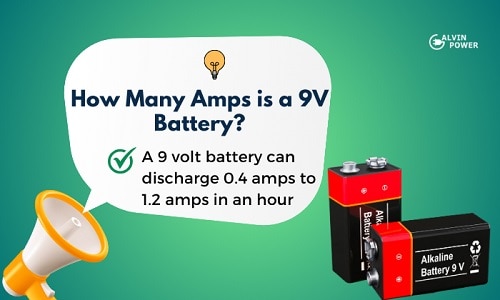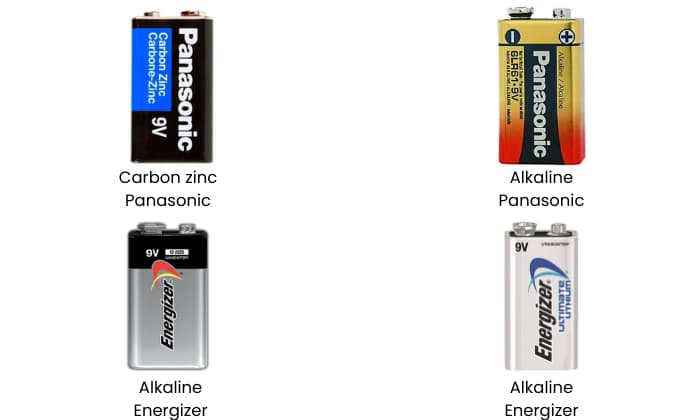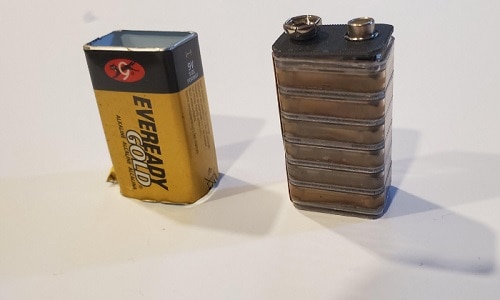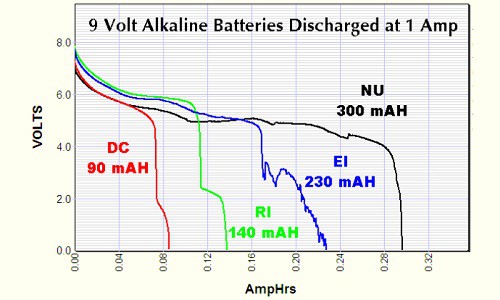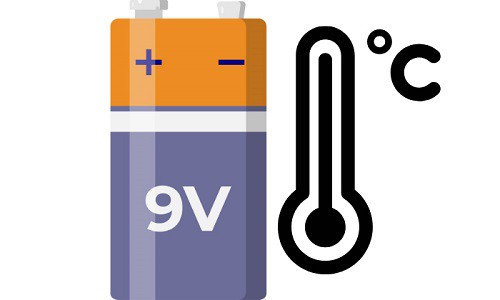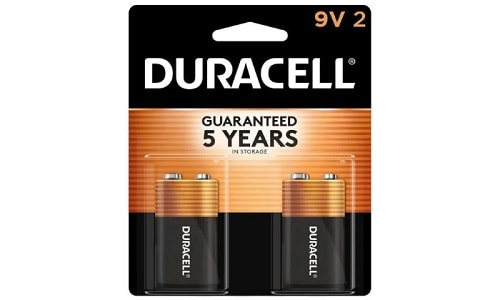Batteries are handy energy packs used to power our little pieces of equipment. The 9 volt battery, for instance, is commonly used in wall clocks, small electronics, and radios. With its small size, it’s fascinating to know how much electricity this little unit can release.
How many amps is a 9V battery? A 9 volt battery can discharge 0.4 amps to 1.2 amps in an hour, depending on its chemistry.
Table of Contents
How Many Amps Does a 9V Battery Have
We can estimate 9V battery amps by looking at its capacity. The battery capacity tells us how much current can be sustained by the unit in an hour.
The standard 9V carbon-zinc battery usually has a capacity of 400 mAh (or milliamp-hour). This means our carbon-zinc battery may sustain 400 milliamps in an hour before it completely depletes.
Here is a summary of the estimated capacities for other types of batteries. Of course, these are simply estimates, and the actual current may be different due to the batteries’ internal resistance and temperature:
| Battery type | Battery capacity (in mAh) |
| Carbon zinc | 400-600 |
| Alkaline | 550-600 |
| Lithium | 800-1200 |
| Nickel metal-hydride | 175-300 |
The max current 9V batteries can deliver is different from the current that we can estimate from the battery capacity.
The maximum current could sometimes be achieved by giving your battery a short circuit (which is not recommended) and is often limited by the batteries’ internal resistance.
We’ve listed the maximum current of some batteries that have been shorted:
| Battery type | Brand | Max sustained amps (in mAh) | Duration (in seconds) |
| Carbon zinc | Panasonic | 400 | Over 240 |
| Alkaline | Panasonic | 1200 | 160 |
| Alkaline | Energizer | 1280 | 200 |
| Lithium | Energizer | 3000 | 30 |
Based on the table, lithium batteries can provide high amounts of current in a short time. Carbon-zinc batteries, however, do not discharge as much, so they cannot be used in high-output applications.
Alkaline batteries are in the middle in terms of sustained max amps and duration.
Factors Affecting Amperage
1. Battery composition
From the tables we’ve previously shown, we can see that not all materials can deliver the same battery current. Carbon-zinc batteries do not release much energy compared to alkaline or lithium.
Lithium batteries also have less internal resistance and therefore more efficiency than the others.
2. State of charge
Any 9V battery experiences decreasing voltage as the unit gets discharged. This leads to lower battery current. Manufacturers usually publish discharge graphs of how voltage decreases as the unit is used.
3. Battery temperature
Battery temperature affects the output of 9V batteries. Most batteries have voltage or ampere ratings at 21 degrees Celsius. Cold temperatures increase the batteries’ internal resistance and decrease voltage.
4. Age
9V batteries often last up to five years with moderate use, but as they age, their current will get lower.
How to Check 9V Battery’s Amps
The fastest way to measure the battery’s output current is to use a multimeter:
- Remove the battery from the equipment or circuit.
- Set the multimeter to DC current and connect the multimeter probes to COM and VΩA ports.
- Place the multimeter leads to the same terminals of the battery (positive to positive, negative to negative).
- Measure the current. A full 400 mAh battery should give you close to that value.
Conclusion
9V batteries are best suited for small appliances thanks to their small current output. Their ratings range from 175 mA to 1200 mA for one hour use, but they can reach up to 3000 mA under demanding conditions.
Different factors can also affect how many amps is a 9V battery. Regardless of composition, state of charge and battery temperature, always check your battery and see if it’s still fine, or get fresh ones if you want the best performance for your mini electronic gadgets.

I am Edwin Jones, in charge of designing content for Galvinpower. I aspire to use my experiences in marketing to create reliable and necessary information to help our readers. It has been fun to work with Andrew and apply his incredible knowledge to our content.

